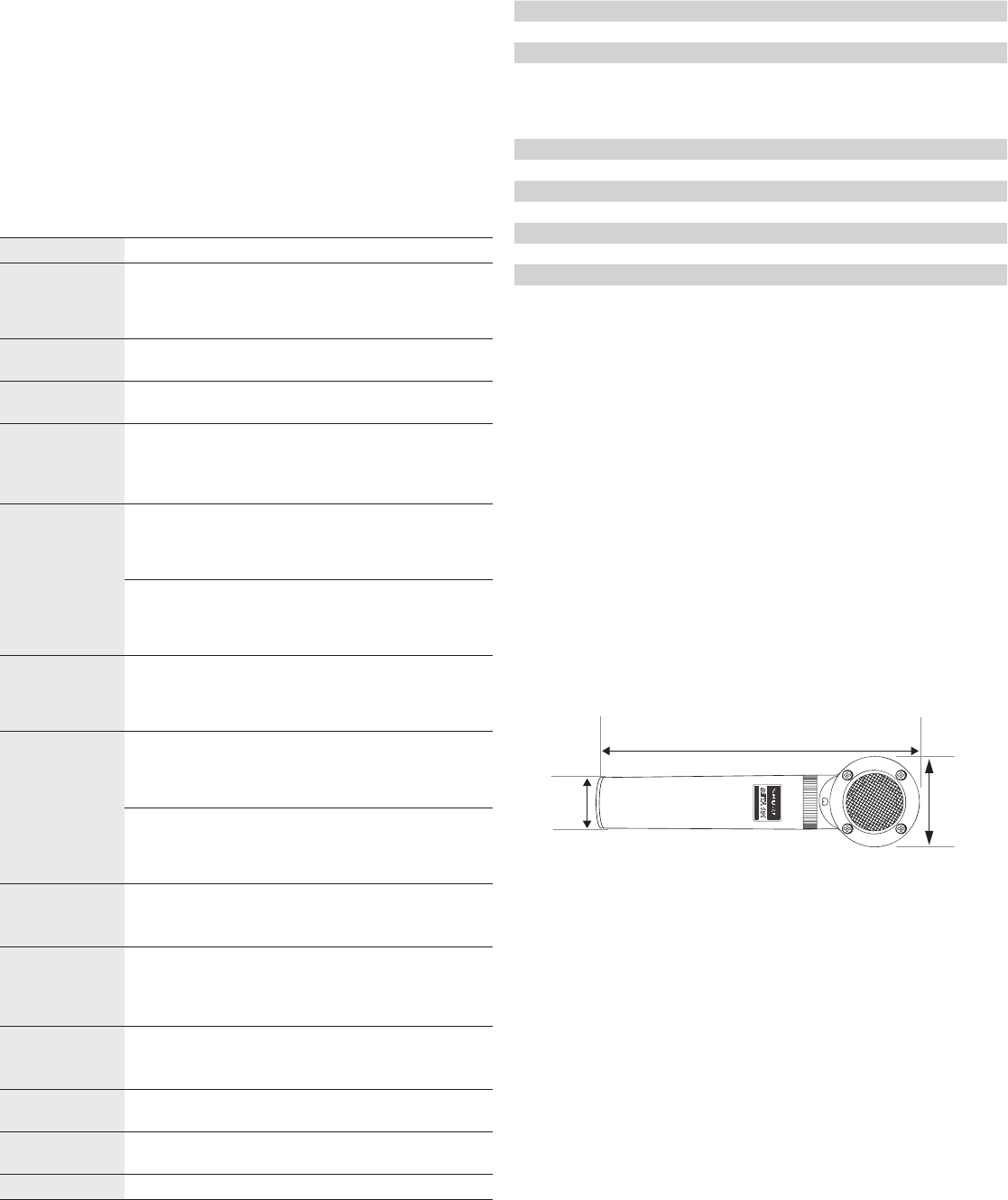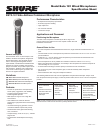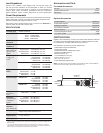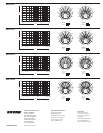
Power Requirements
This microphone requires phantom power and performs best with a 48 Vdc
supply (IEC-61938). However, it will operate with slightly decreased head-
room and sensitivity with supplies as low as 11 Vdc.
Most modern mixers provide phantom power. You must use a balanced mi-
crophone cable: XLR-to-XLR or XLR-to-TRS.
Load Impedance
Maximum SPL capability, output clipping level, and dynamic range vary
with the input load impedance of the preamplifier to which you connect
the microphone. Shure recommends a minimum input load impedance of
1000 Ω. Most modern microphone preamplifiers meet this requirement.
Higher impedance results in better performance for these specifications.
Accessories and Parts
Furnished Accessories
Mic Clip A57F
Zippered Carrying Case A181C
Windscreen A181WS
Optional Accessories
Cardioid Capsule RPM181/C
Supercardioid Capsule RPM181/S
Bidirectional Capsule RPM181/BI
Omnidirectional Capsule RPM181/O
Beta 181 Preamp RPM181/PRE
Universal Microphone Mount A75M
7.6 m (25 ft.) Cable C25E
Note:
Information in this guide is subject to change without notice. For the additional
information about this product, please visit www.shure.com.
CERTIFICATION
Eligible to bear CE Marking. Conforms to European EMC Directive 2004/108/
EC. Meets Harmonized Standards EN55103-1:1996 and EN55103-2:1996,
for residential (E1) and light industrial (E2) environments.
The Declaration of Conformity can be obtained from:
Authorized European representative:
Shure Europe GmbH
Headquarters Europe, Middle East & Africa
Department: EMEA Approval
Wannenacker Str. 28
D-74078 Heilbronn, Germany
Phone: +49 7131 72 14 0
Fax: +49 7131 72 14 14
Email: EMEAsupport@shure.de
SPECIFICATIONS
Cartridge Type Electret Condenser
Polar Pattern 181/C: Cardioid
181/S: Supercardioid
181/O: Omnidirectional
181/BI: Bidirectional
Frequency
Response
20 to 20,000 Hz
Output
Impedance
110Ω
Sensitivity
open circuit volt-
age, @ 1 kHz,
typical
Cardioid: –46.5 dBV/Pa
[1]
(2.4 mV)
Supercardioid: –49.5 dBV/Pa
[1]
(2.5 mV)
Omnidirectional: –52.0 dBV/Pa
[1]
(2.6 mV)
Bidirectional: –51.0 dBV/Pa
[1]
(2.6 mV)
Maximum SPL
1 kHz at 1%
THD
[2]
2500 Ω load: Cardioid: 151.5 dB SPL
Supercardioid: 154.5 dB SPL
Omnidirectional: 157.0 dB SPL
Bidirectional: 156.0 dB SPL
1000 Ω load: Cardioid: 149.0 dB SPL
Supercardioid: 152.0 dB SPL
Omnidirectional: 154.0 dB SPL
Bidirectional: 153.5 dB SPL
Signal-to-Noise
Ratio
[3]
Cardioid: 73.5 dB
Supercardioid: 71.5 dB
Omnidirectional: 70.5 dB
Bidirectional: 71.0 dB
Dynamic Range 2500 Ω load: Cardioid: 131.0 dB
Supercardioid: 132.0 dB
Omnidirectional: 133.5 dB
Bidirectional: 133.0 dB
1000 Ω load: Cardioid: 128.5 dB
Supercardioid: 129.5 dB
Omnidirectional: 130.5 dB
Bidirectional: 130.5 dB
Clipping Level
@ 1 kHz, 1%
THD
2500Ωload: 10.5 dBV
1000Ωload: 7.5 dBV
Self Noise
equivalent SPL,
A-weighted,
typical
Cardioid: 20.5 dB SPL-A
Supercardioid: 22.5 dB SPL-A
Omnidirectional: 23.5 dB SPL-A
Bidirectional: 23.0 dB SPL-A
Common Mode
Rejection
20 to 20,000 kHz
≥55dB
Polarity Positive pressure on diaphragm produces positive
voltage on pin 2 with respect to pin 3
Power
Requirements
11–52 V DC
[4]
phantom power (IEC-61938)
2.4 mA, maximum
Net Weight 145 g (5.1 oz.)
[1]
1 Pa=94 dB SPL
[2]
THD of microphone preamplifier when applied input signal level is equivalent to cartridge output
at specified SPL
[3]
S/N ratio is the difference between 94 dB SPL and equivalent SPL of self noise, A-weighted
[4]
All specifications measured with a 48 Vdc phantom power supply. The microphone operates at
lower voltages, but with slightly decreased headroom and sensitivity.
124,46 mm
(4.90 in.)
20,32 mm
(0.80 in.)
34,54 mm
(1.36 in.)





